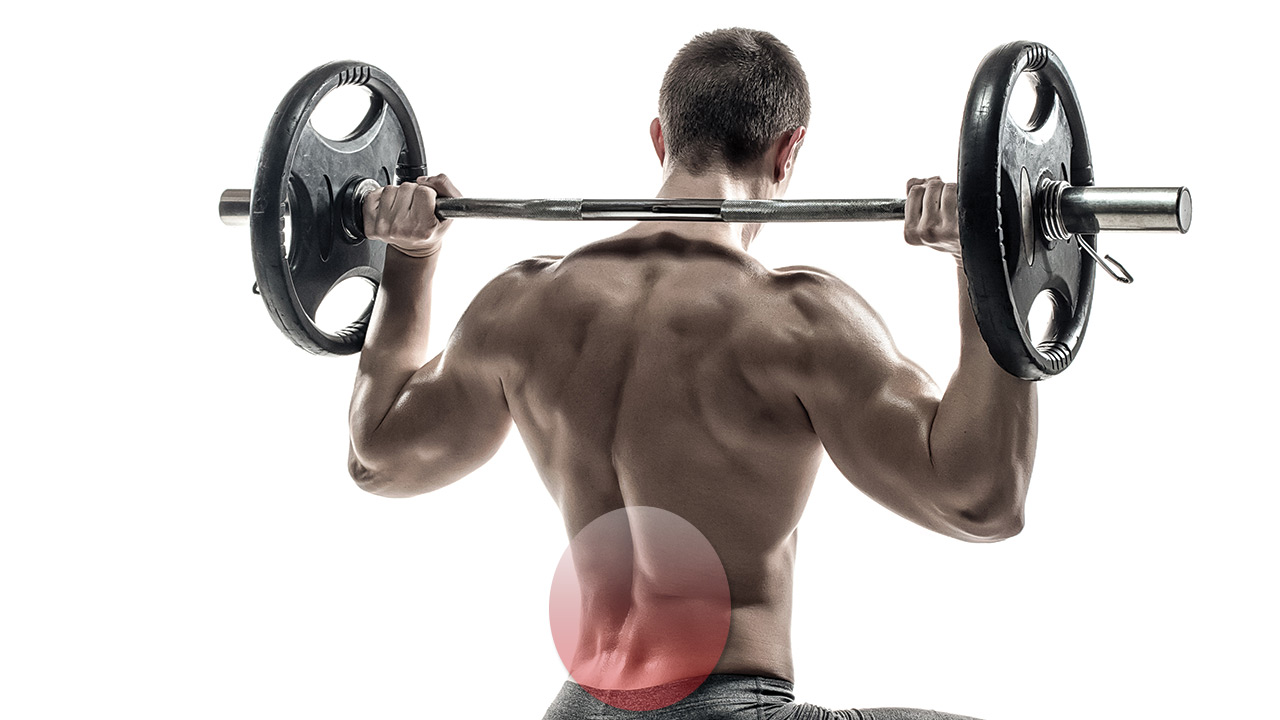The most susceptible body part worldwide is unquestionably that block of muscle between your glutes and upper back – the lower back. Here are the strengthening exercises and stretches for lower back pain to make it the most rock-solid part of your body.
TRAINER
Sean Royer is an NPC national level bodybuilder, Optimum Nutrition athlete and a certified Chiropractic Sports Physician specializing in perfecting the biomechanics of elite level athletes.
Exercises for lower back pain
Further down this post, we’ll be discussing the importance of secondary and spinal stabilizers in strengthening the lower back. In order to work the secondary and spinal stabilizers, let’s put together a small workout plan.
Step 1
Work the multifidus
Lay flat on your back with your knees bent. Put your hands behind your lower back.
Draw your thighs into your hips, there should be pressure under your fingers at all times.
(similar to the knee to chest stretch, but with both knees up and hands under the lower back)
This exercise can be done doing both sides at the same time holding for five seconds and releasing.
Continue for 10 reps then take a rest and repeat to get three total sets.
Step 2
Target the rotatores
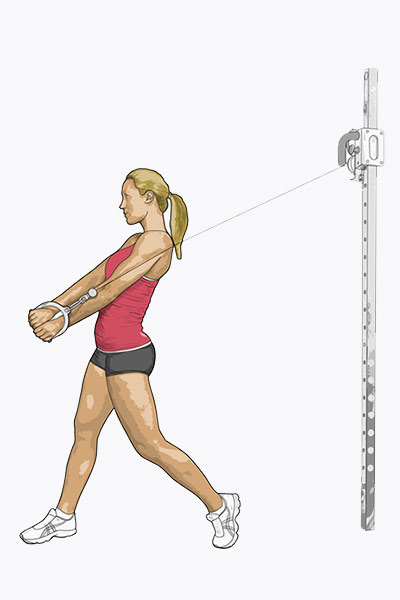
These are worked when the body is in a twisting motion. Standing up, attach a therapy band to the wall and hold with both arms.
Pull the therapy band away from the wall using a torso twist motion. The hips and head will remain straight.
There should be a total of 10 reps done to one side then 10 reps to the opposite side. Repeat for three sets.
Step 3
Hit the gluteus medius
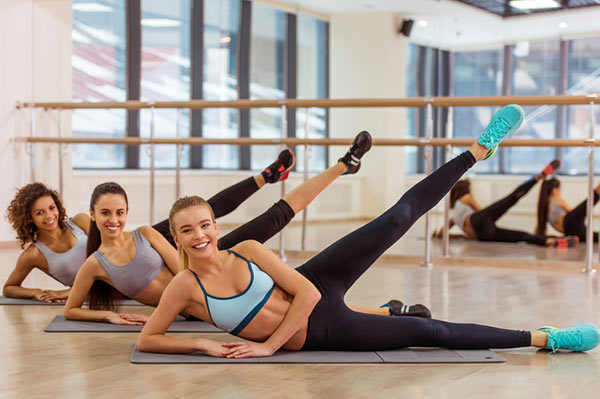
This muscle is worked when you are laying on your side with knees bent. Then the top leg should come up into the clamshell position.
This exercise should be repeated 15 reps on one side and then 15 reps on the other side for a total of two sets.
To make the exercise more challenging you can wrap a Theraband around the thighs for resistance.
Step 4
Master your gluteus minimus muscle
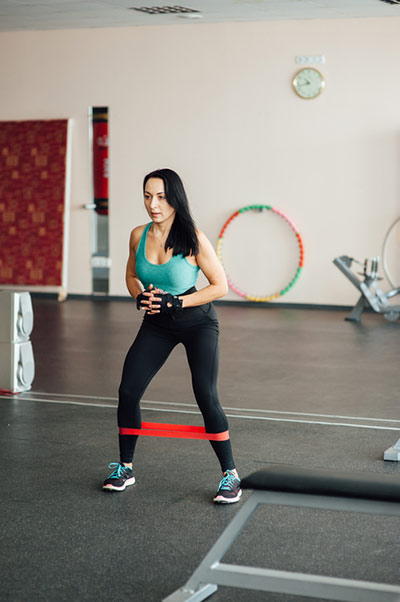
The exercise is performed using a Theraband wrapped around the lower leg below knee level.
Sidestep to the left and right, 10 steps to each side in order to activate the gluteus medius muscle.
This exercise can be repeated for three sets.
Stretches for lower back pain
We have all learned the importance of post-workout nutrition. However, post-workout stretching is also very important in regards to reducing lower back injuries.
After the muscles have been warmed up and worked, they are very elastic. This becomes an advantageous time to stretch your lower back muscles.
The stretching of the lower back to prevent injury can be broken down into several steps:
Step 1
Knee to chest stretch
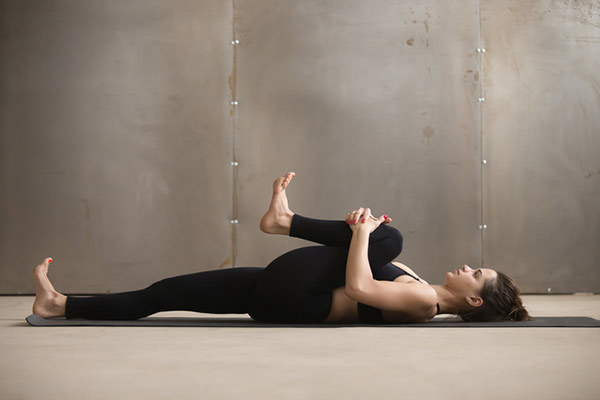
Lying flat on your back bring one knee to your chest, holding for 30 seconds. Switch legs. Do three times per side.
Step 2
Cat and camel stretch
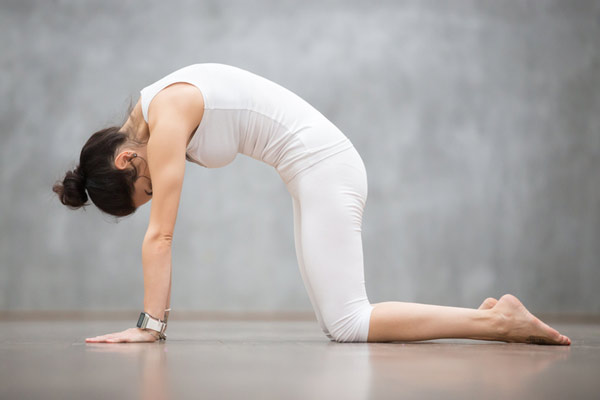
Get on all fours. Begin by hunching the low back upward like a cat and then relaxing the low back and arching it like between the camel’s humps.
Hold for 20 seconds in each position, and repeat three times per side.
Step 3
Psoas stretching
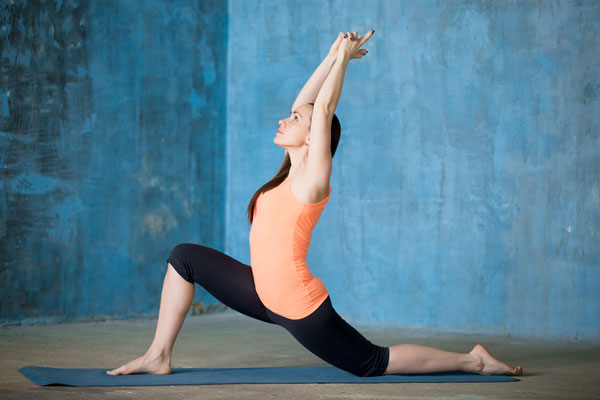
Make sure you are on a surface that is elevated off the floor. (pictured without elevation on the back leg)
Draw one knee to the chest and allow the other leg to hang off the side of the table, towards the floor.
If you were pulling your left knee to the chest you are stretching the right psoas muscle. Hold for 20 secs then change to the opposite side. Repeat three times each side.
This can also be done on the floor as the runner’s stretch. Get in a lunge-like position and extend your back leg behind you.
Let your knee touch the floor, lean into the stretch and don’t let your front knee go over your toe. You are stretching the leg behind you.
Step 4
Lower trunk rotation
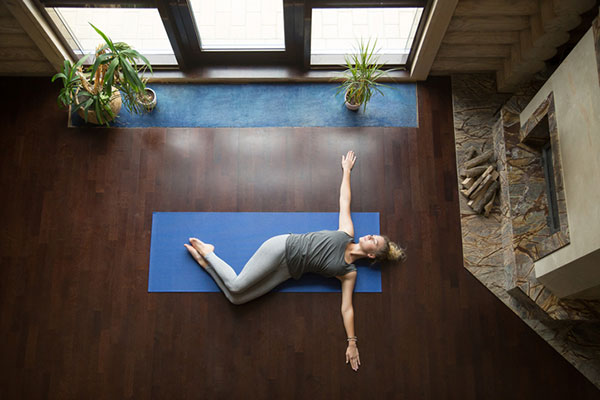
Lie on your back on the floor or a bed. Bend your knees. Rotate your legs to one side while keeping your back and shoulders flat.
Hold for 20 seconds and change to the opposite side. Repeat three times per side.
Step 5
Hamstring stretch
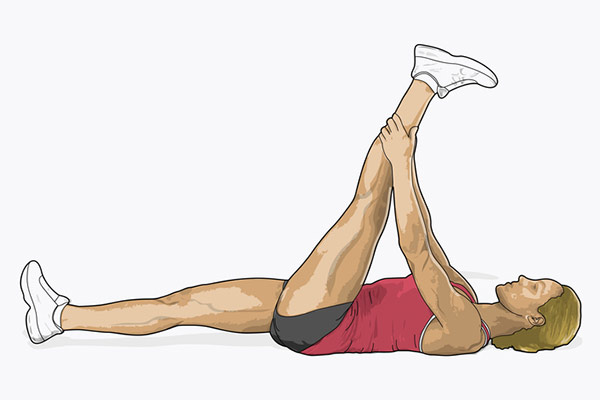
Use a belt looped together or a Pilates ring. Lie on your back and put one of your legs in the belt, loop or ring. (pictured without a band when your hamstrings are not flexible enough)
Slowly pull it towards your head until you feel a stretch in the back of your thigh.
Hold for 20 seconds and change to the opposite side. Repeat three times per side.
Foam roll for lower back pain
Foam rolling has increased greatly in popularity within the last several years. Foam rollers come in many shapes and sizes from large diameter eight-inch cores to smaller three-inch cores.
The purpose of this foam rolling is to increase flexibility and range of motion while preventing injury.
It acts as a leverage point so you can get areas of the body to become flexible while putting pressure on individual muscles.
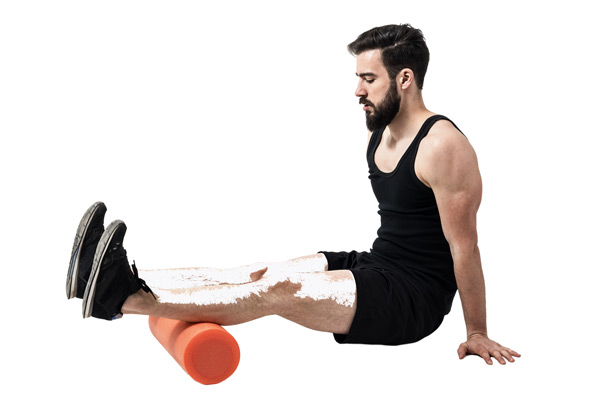
Foam rolling your calves, hamstrings, glutes and lower back can help to prevent low back injuries.
Muscular balance and compensation is a major factor when injuring the lower back. Foam rolling should take place for approximately eight to 10 minutes post workout, while your muscles are supple.
Bonus tips for exercises and stretches for lower back pain
One of the key components to having a high-performance physique means staying healthy in the gym.
The question is, how can athletes accomplish this feat while putting long hours into molding and shaping their bodies?
Here’s how to focus on strengthening your lower back while preventing injuries throughout intense training sessions.
Target the secondary movers and spinal stabilizers of the lower back
While the majority of functional weight training addresses your quadriceps muscle, hamstring muscles and gluteus maximus muscle, there are another set of deep stabilizers that are very important.
These muscles include the multifidus, rotatores, gluteus medius and gluteus minimus.
Yes, they are not the everyday muscles which you think about during your workout or commonly added to your workout.
However, they are absolutely necessary for injury prevention and can be addressed with simple motions. You’ll find the workout above targets these four muscle groups.
Level your pelvis
It is quite rare to find pelvic un-leveling in a majority of the general public.
Some of this could be due to spinal alignment while in others it is due to anatomical leg length discrepancies (short leg).
When an athlete with pelvic un-leveling works out, it puts more strain and stress on the lower back as well as the hip joints.
The stabilizing muscles on the side of the leg length discrepancy become inactivated.
This creates muscle weakness and imbalance. One of the best ways to address this issue is the use of custom-made orthotics in your shoes.
Orthotics have become much more commonplace and are available to order in multiple doctors’ offices including podiatrists, chiropractors, as well as, physical therapy offices.
The final word on managing back pain and preventing lower back pain
Always remember that the stabilization and injury prevention becomes a balance of the supporting structures around your lumbar spine.
The use of correct form and proper technique help in the process of injury prevention.
While athletes will always push the limits during training, the benefits of addressing the smaller functional muscles will keep you, the athlete, from suffering low back injuries so your training is always taking you from strength to strength.
For more content about exercises and stretches for lower back pain, nutrition tips, and training advice, get TRAIN magazine direct into your inbox every month for free by signing up to our newsletter


